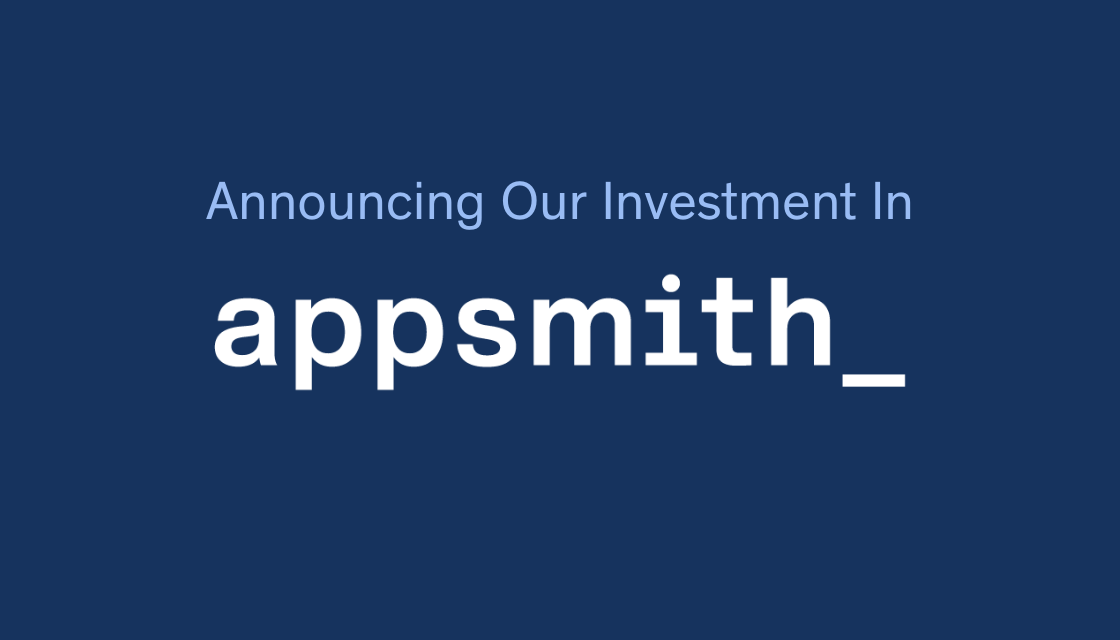I’ve been investing in software for nearly a decade, and one thing I’ve learned in that time is that there’s rarely someone better suited to solve a problem than someone who’s actually dealt with it. It’s why I’ve found myself working with founders passionate about building tech to fix issues they experienced themselves. The intensity and expertise they bring to the table are incredibly hard to replicate.
These are among a few big reasons why I’m excited to announce our investment in Appsmith.
I wrote earlier this year about how enterprise software became an unlikely hero in 2020, with customer-facing apps like Slack, Zoom, Asana et al being the reason many have been able to still log in, collaborate with teammates and get everything done over the past 18+ months. And while most of us think of enterprise software in terms of the apps we use to get our jobs done, there are also the internal apps that companies use to bring services to market that customers (and many employees) never see.
Whether software, manufacturing, healthcare, or any other sector, all companies need custom software (including dashboards, admin panels, and workflows) that talk to different data sources. To date, building and maintaining these internal apps has been an arduous, repetitive, and expensive process that usually falls to developers within the company. Not surprisingly, they don’t enjoy this work and see it as a distraction to building core product features. (Read: Appsmith’s founders were all tasked with this responsibility in past lives. They’ve felt that frustration.) In addition, development gets exponentially pricier for companies as they grow, and as data fragmentation and mixed environment data increases.
Appsmith is an open-source framework for developers to build and host those internal apps quickly and easily. It simplifies the challenges of integrating with databases, connecting to APIs, building easy-to-use UIs, and building repetitive front-end components (i.e. tables, data entry forms). Appsmith also solves the ongoing maintenance required to make sure that data pipelines are properly scheduled and can get required updates down the road.
In the short time span that Appsmith has been live, the company has already amassed an impressive list of customers and users, which includes 5+ million downloads by users at 1,000+ enterprises in 100+ countries. Appsmith’s traction on Github as an open-source platform has also been incredible – 7,000 stars and 120 contributors, 100 of those from outside the company. And perhaps most importantly, the diversity of use cases and user locations, prove the universality of the problem. Without Appsmith, each of these projects would have taken months of precious development time.
Our investment in Appsmith also supports our belief that the $16 billion low-code app development market is greatly underestimated and will only grow fast as developers adopt platforms (like Appsmith) to automate a lot of work that is being done manually today. We also believe in Appsmith’s open-source approach which prioritizes the developer experience while also providing a level of flexibility not possible with traditional SaaS. There’s significant value and opportunity in having a community that contributes to the long-tail of integrations and UI widgets required as customer counts scale, and the types of use cases and data sources needed diversifies.
Our excitement is rooted in this exceptional founding team as much as the market opportunity. Abhishek, Arpit, and Nikhil are all incredibly passionate about building a product they wished they had earlier in their careers. They also understand the target market on a deep level. Of note, Abhishek and Arpit together grew a gaming app to 100,00+ DAUs, 1 million downloads, and a 4.5-rating on Google Play in just 120 days. That kind of traction speaks to how well they understand users, as well as the mindset they’ll bring to solving this problem, catering to developers and finding product-market fit.
This funding milestone is only the beginning for Appsmith. We’re excited to see what’s next.
